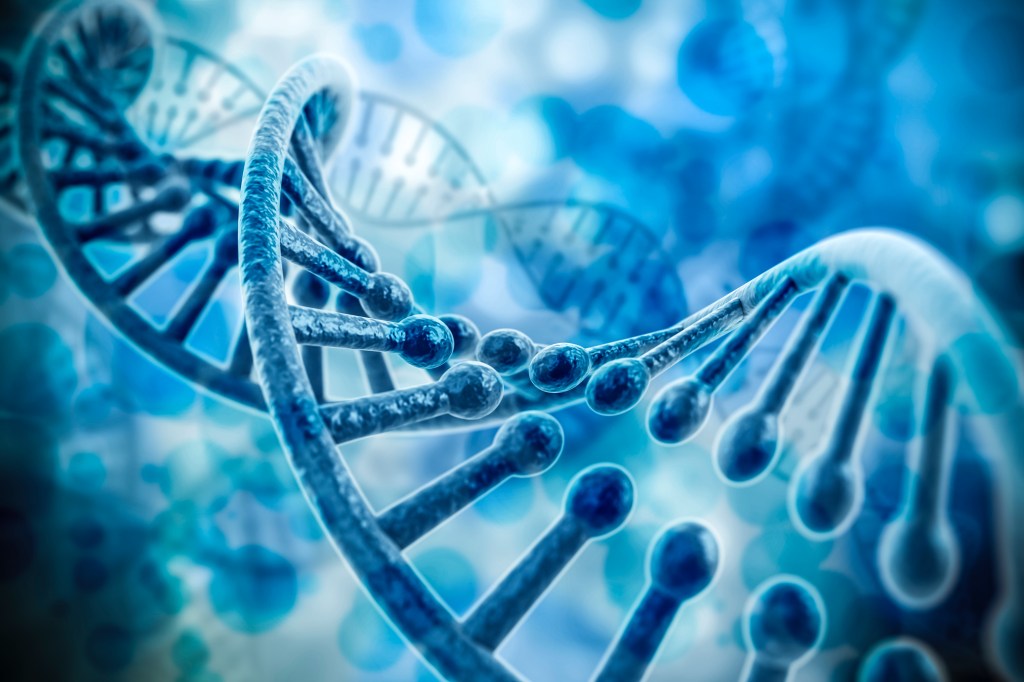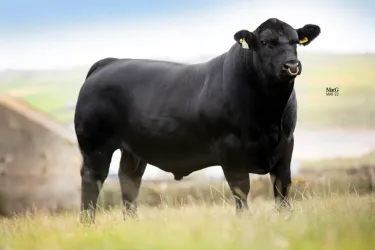An introduction to genomics
Genetic improvement is part of a comprehensive plan to build and sustain profitable dairy production. Genomics uses the DNA of younger cows to understand and evaluate their genetic traits. The genetic traits of a dairy herd are the foundation of the herd’s production, health, milk quality, reproduction, and nutrition. When any one of these is lacking, then the farm won’t get the best from the herd. Maximum progress comes when all these areas are performing well.
Using genomic testing to build up a full picture of a herd’s DNA potential is the first step toward increasing reliability. Rather than relying on Parent Average to predict the performance of the offspring, genomic testing can give considerably increased reliability, resulting in easier prediction of young cattle.
The increased reliability gained from genomic tests allows herd owners to be more effective in making genetic progress in the traits they are looking for. It enables them to manage animals differently, placing more emphasis on higher ranking cattle and less on lower ranking ones, removing the risk of gambling.
Genetic sampling
There are a range of points within a young animal’s life that serve as common sampling times. The key is to perform genetic testing as close to when the information is needed as possible, leaving enough time to receive results and implement a strategy.
Sampling at birth might be a necessity if there are limited calf facilities. In order to invest in and raise the best young heifers, genetic testing can tell you which are most likely to give you a good return on your investment. Other common times to perform genomic tests include weaning, vaccination, pre-breeding and before off-heifer pen moves.
Using genomic testing strategies to accelerate genetic progress
Genetic testing gives farmers a large amount of data from which they can make breeding decisions, including:
- Production traits such as milk volume, fat volume, protein volume, fat percentage and protein percentage.
- Milk protein components like beta lactogloblin
- Type traits and indexes such as linear conformation traits, type-final score, udder, feet and leg and body size components
- Parentage and inbreeding information
- Health and reproduction traits such as SCS, DPR, HCR, CCR, productive life, calving ease, still births, feed efficiency, calving ability and fertility index.
- Risk management information such as BLAD, DUMPS, mule foot, factor XI, chondrodysplasia, weaver, spinal demyelination and fertility haplotypes.
Alongside this, testing can indicate full composite indexes for net merit, cheese merit, fluid merit, grazing merit and breed index. This comprehensive profile of each animal gives breeders a full picture of where their profit centres are and how each cow can contribute to the herd.
Improving efficiency and profitability by accelerating genetic progress
All of this information can be used to build a breeding strategy for genetic progress that improves the efficiency and profitability of the herd over several generations. The chosen breeding strategy determines the rate of acceleration.
The calculation to work out genetic progress by year:
Accuracy x selection intensity x genetic variation
_____________________________________________________
Generation interval
Genomic testing increases the accuracy on female population. Farmers have more information on their calves and heifers to determine which females will be the best to breed replacement heifers for the milking herd, and which can be bred for terminal traits to build profitability elsewhere. Selection intensity can also be increased through better reproduction. With the use of sexed semen and syncing programmes to improve reproduction, it’s much easier to ensure there is an excess of heifers, making it more possible to find the best replacements to invest resources in.
To make these decisions, it’s imperative to bring animal rankings down to one number, whether that’s using a selection index or developing a bespoke one for the traits that are important to the dairy’s specific breeding program. A selection index ranks cows on a scale that weighs multiple traits, placing appropriate emphasis on them in accordance with the stated goals.
The overall goal is to improve the herd’s genetic progress faster than the industry for the traits selected – and most herds utilising genomic testing and strategy are improving at a much faster rate. Herds often make twice or three times the progress for their chosen traits than the industry average. The key to success is to have clear breeding objectives and use genetics to optimise the breeding strategy. Paired with the use of artificial insemination with sexed semen and synchronisation programs, dairy farms could see huge benefits from these kinds of strategies.
Selection indexes
There are four selection indexes published by the CBCB
- Net Merit Dollars (NM$) – A frequently used index that balances many traits into a lifetime profit prediction
- Cheese Merit Dollars (CM$) – This index places added emphasis on protein for use in predominantly cheese manufacturing markets
- Fluid Merit Dollars (FM$) – Here the emphasis is placed on milk production, mostly utilized in fluid milk markets
- Grazing Merit Dollars (GM$) – Recently introduced to provide selection index for grazing dairies. Places a larger emphasis on reproduction for herds requiring seasonal calving.
The main selection index in the UK is Profitable Lifetime index (£PL), made up of PTAs including:
- Milk, Fat and Protein kg
- Fat and Protein %
- SCC, Udders
- Lifespan
- Fertility Index
- Locomotion/Feet & Leg
- Calving Ease
How genomic testing can be used to improve the herd:
Genomic testing will give greater confidence in selecting which youngstock to breed the next batch of replacement heifers from. Those that are genetically superior can be artificially inseminated with sexed semen, while the rest are bred to beef to increase calf value. Or, in the case of excess replacement heifers, the less superior genetics can be sold.
Here are two strategies with which genomic tests can improve the performance of a dairy herd.
1) Manage herd replacement inventory
For herds who are expecting to make more heifers than needed, using genomic testing can help rank the animals, and understand their reproductive performance. From this information it is easier to pick the ones that have the best opportunity to add to the profit level or genetic progress level of the herd.
When improving the efficiency levels of a herd, feed costs are the highest outlay for a dairy. The second highest cost is the replacement cost. If there are consistently more replacement heifers than needed being raised, genomic tests can ensure investment is going to the right heifers. The goal is to manage pre-determined herd size while managing heifer replacement costs, by removing genetically inferior heifers.
Culling heifers makes sense – it’s profitable. Removing the bottom 15% of heifers increases the average PTA in just one generation, and there will be additional benefits for the following generation too.
2) Generate more replacements from the genetic superior females
Whether looking at maintaining herd size or expanding, using genomic testing to generate genetically superior replacements is a common strategy. The goal is to make more of the animals that get the best results. Identify the replacement numbers needed then choose a strategy for multiplying the top end.
Every herd is different and needs its own strategy on culling numbers, using sexed semen or embryo transfer (ET). Knowing the genetic testing scores of each animal makes it easier to set those strategies.
The lower-scoring animals can be terminally bred or moved out of the herd, as they are unlikely to give any return on investment once they’ve calved. With food costs being one of the highest cost centres for a dairy farm, it’s important that low-performing cows, or heifers that are prone to health and reproductive issues aren’t being kept in the herd for longer than necessary.
At the top end of the scale, the highest scoring and highest performing cows are the ones to be multiplied, and AI-ed with sexed semen. These are the heifers that you most want to add a heifer calf to the next generation.
Lifetime implementation of genomic data
The data gained from genomic tests holds long term value to a diary. Initially, the data is there to help inform decision on which cows to keep, buy or cull. But by no means is this the end of its usefulness.
The information continues to inform when making breeding decisions. It can tell farmers which cows can and should bear more heifers. Genomic data can help make mating decisions to reduce risk such as inbreeding and genetic conditions, and it informs decisions on type of bull to be used for mating, where to use sexed semen, where to gain dairy replacement heifers.
It can help to form a beef on dairy strategy for added profitability or highlight which heifers should be moved out of the herd due to lack of ROI.
Genomics also inform later life decisions. Understanding the reliability and profitability of each cow means you can make better decisions about older cows, for example the number of chances before being culled if there are injuries or difficulties, and which cows should be culled and when to make room for the replacements.
ABS and genomic testing
Find out more about our genetic assessments and the impact it can have on:
- Health and reproductive issues
- Lactation performance
- Inbreeding
- Mating decisions






